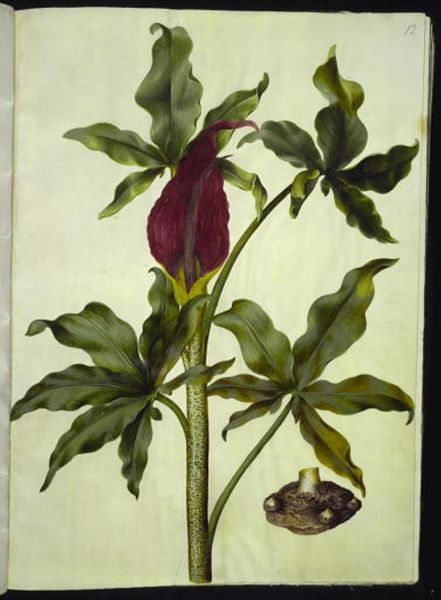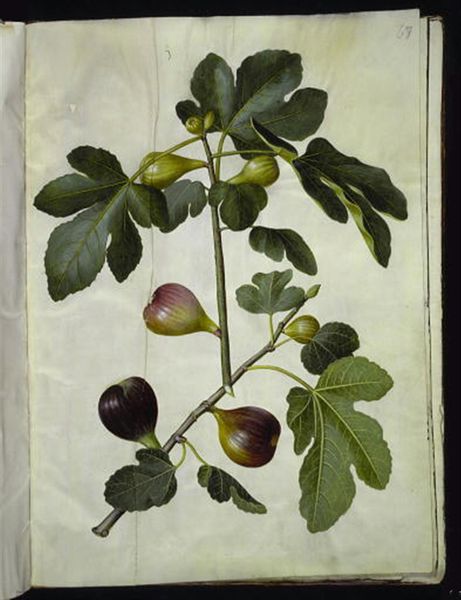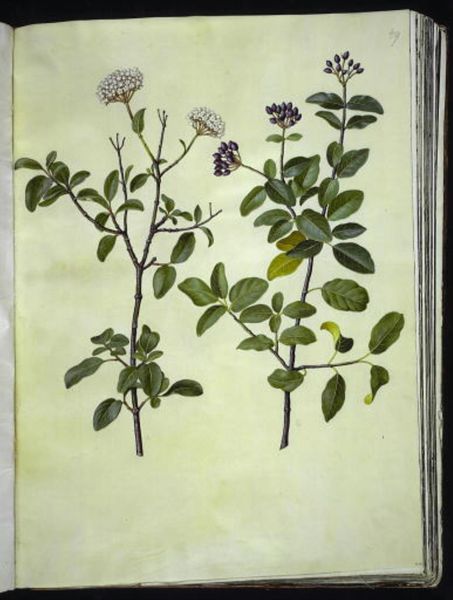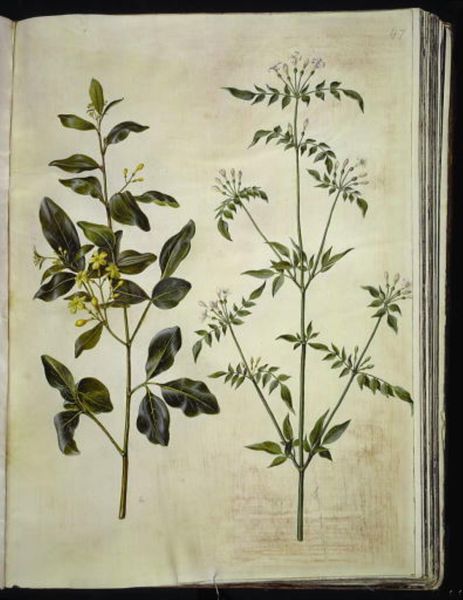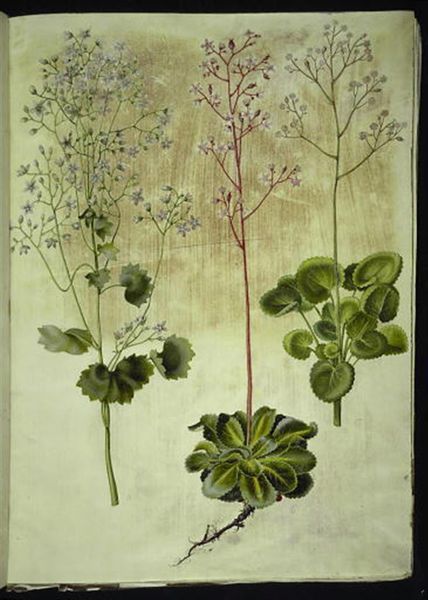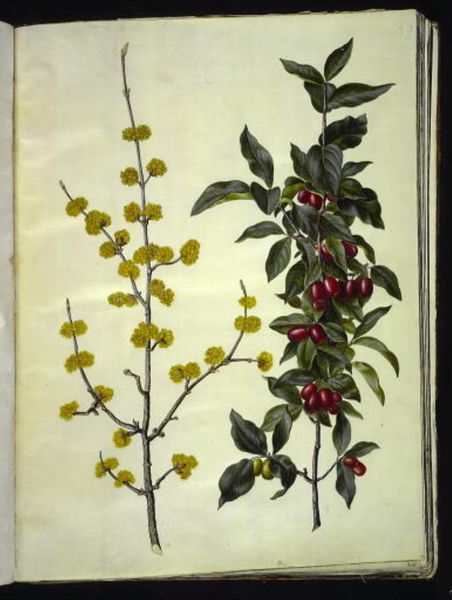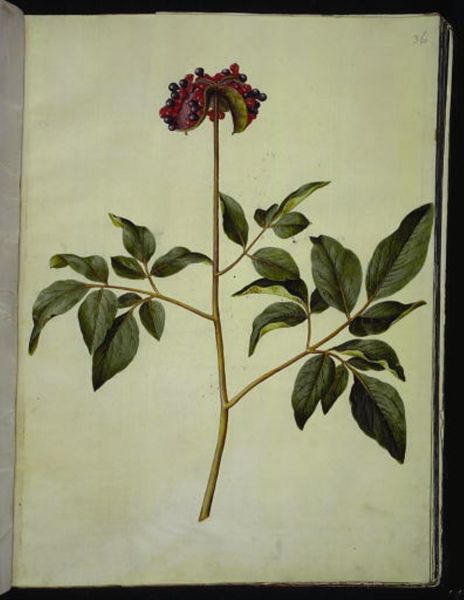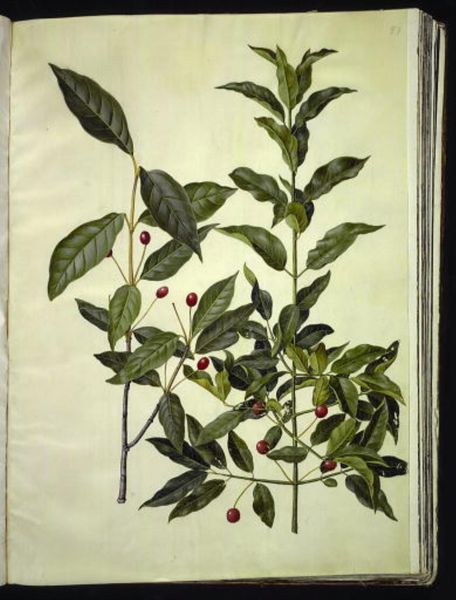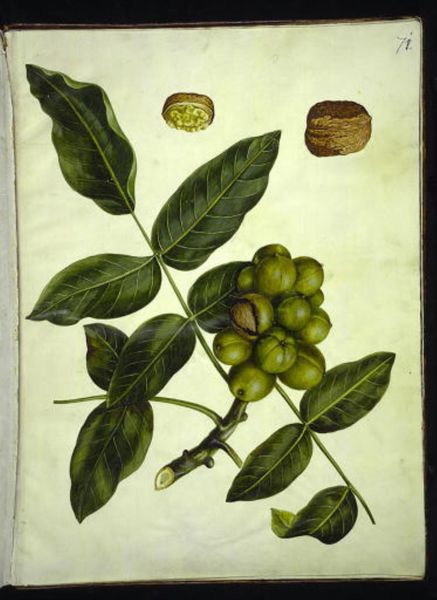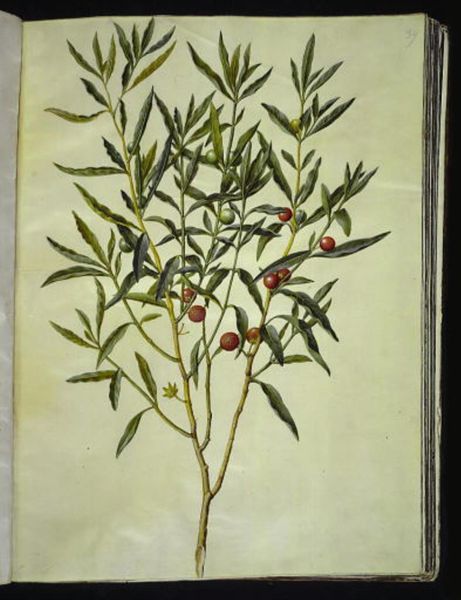
Opuntia ficus-indica, Opuntia humifusa eller Opuntia monacantha (art af figenkaktus) 1649 - 1659
0:00
0:00
drawing, tempera, gouache, watercolor
#
drawing
#
tempera
#
gouache
#
watercolor
#
naive art
#
watercolour illustration
#
watercolor
#
realism
Dimensions: 505 mm (height) x 770 mm (width) (bladmaal)
Curator: This watercolour rendering presents Opuntia ficus-indica, or fig cactus, by Hans Simon Holtzbecker, executed sometime between 1649 and 1659. It’s tempera and gouache on paper, a remarkably realistic depiction housed in the Statens Museum for Kunst. Editor: The immediate feeling is a kind of orderly wildness. It’s as though nature is being presented to us, catalogued and composed, almost scientifically… but still pulsing with a very organic energy. It feels very intentional and carefully considered. Curator: Exactly. The realism underscores a profound interest in the natural world, symptomatic of its period. Notice how Holtzbecker meticulously renders each individual pad. The cactus, native to the Americas, carried heavy symbolic meaning—novelty, luxury, the exotic other—as global trade expanded. Editor: I'm drawn to the muted palette—it steers clear of being flashy. But then you have the two stakes with their peculiar, slightly awkward wrapping that looks like some attempt to control nature, a civilizing effort. Curator: An astute observation. Those ties arguably suggest an early attempt to cultivate or study it within a European context. It represents domestication and control; transforming an exotic item into a status symbol through possession. It speaks volumes about the impulse to classify, conquer and own. Editor: Do you think there’s some kind of tension? The painting wants to showcase wild beauty but is then held back. In my head it makes me want to rebel in favour of something raw. Is this image supposed to represent nature being subservient to human ingenuity, or does the depiction want us to celebrate natural beauty? Curator: It embodies the zeitgeist of that period of enlightenment when art tried to celebrate both those viewpoints at once, the human control over nature and its own infinite and amazing source. Editor: The act of observing nature deeply is beautiful in itself. Curator: Indeed. It grants insights into Holtzbecker's mindset and European engagement with nature during this transformative era. Editor: Thanks for elucidating all of this, I have a different feeling about the painting now.
Comments
No comments
Be the first to comment and join the conversation on the ultimate creative platform.

